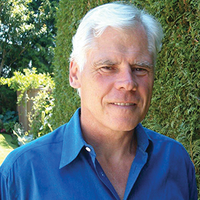It’s a tough pill to swallow, but Dushaw Hockett believes recognizing this in ourselves is a positive step forward for the industry
We all have implicit bias: you, the person next to you, your colleagues, even your family and close friends. You just might not know it yet.
This statement may seem antagonistic, but according to Dushaw Hockett, founder and executive director of Safe Places for the Advancement of Community and Equity (SPACEs) who equips leaders with skills in the area of bias reduction and bias interruption, “having implicit bias doesn’t make us bad people. It makes us human!”
Implicit Bias
So, what exactly is implicit bias? Hockett describes it as “a preference for or prejudice [or aversion] against a person or group of people; and one that operates outside of our conscious awareness.”
He adds that implicit biases are triggered through rapid and automatic metal association of other groups of people and are social and structural (TV, news, friends, family, radio).
Bias is a subject that the construction industry has been working to overcome for many years now – tackling issues of gender, generation and race – but Hockett says implicit bias goes much deeper than that: “The science of implicit bias says that you can be a school administrator, for example, and say that you are deeply committed to nurturing and building up young people, and yet be the same school administrator who leads your school in high rates of suspensions and expulsions of young people. And both of those things would be true. Consciously, you’re deeply committed to building young people up. Unconsciously, you’re doing harm in the process.”
Three Characteristics of Implicit Bias
Hockett says there are three characteristic or types of implicit bias. Characteristic number one is that implicit biases operate at the subconscious level, outside of conscious awareness. “We don’t know that we have them, and they can’t be accessed through introspection,” he says. “In other words, the science of implicit bias says that none of us can scratch our heads, and wonder out loud, do I have a bias against men, against women, against black people, against white people, against immigrants, and expect to accurately answer that question.”
Studies back this idea up, as they have shown that the human brain can only consciously process around 40 items per second, but as many as 11 million unconsciously.
Characteristic number two, says Hockett, is that implicit biases oftentimes run contrary to our conscious stated beliefs about who we are as human beings and what our values are. He cites one example as someone who may be consciously committed to a cause such as gender equality in the workplace, but unconsciously, think that the women in the industry have different skills and are great, say, in the office, but not so great out in the field. Even if you find yourself hiring on a gut feeling, you’re unconsciously hiring based in bias.
The third characteristic that makes a bias implicit is that they are triggered through rapid and automatic mental associations that we make between people, ideas, and objects, and attitudes and the stereotypes that we hold about those things.
The Problem with Bias
A big problem with implicit bias in the workplace, explains Hockett, is that it can be extremely damaging: on the more obvious level it can result in lawsuits, but on a more subtle level, it affects morale, productivity and retention—a person may be alienated and feel like their voice isn’t being heard.
That can even impact recruitment efforts. Research has shown that some of the words used in job postings can play into the unconscious biases of people in the job market. Job ads encouraging women and millennials to apply, is in and of itself implicit bias as it discourages others to apply.
Once implicit bias has been recognized, Hockett says there is a tendency to engage in self-shaming. “[People tend to think] this is who I am. I’m a horrible human being. There’s nothing I can do about it. I’m going to always be this way.” But that attitude, he explains, is self-defeating.
Moving Toward Belonging
The great news is, implicit biases can be changed and unlearned. “It’s about taking preventative rather than reactive strategies,” he says. “If we want to move to a better place we have to pay attention to implicit bias.”
To outsmart our own bias, Hockett says commitment is needed from the top. Leaders can begin with developing a coordinated, strategic plan with long-term and short-term objectives aimed at diversity and belonging.
The unified goal is to shift the mindset to recruit, welcome, and retain the most competent and skilled workforce available while embracing differences in age, ability, ethnicity, sex, gender identity, national origin, language, marital status, political affiliation, race, religion, sexual orientation, and other characteristics that make individuals unique.
Hockett says efforts to learn more about the types of biases like this helps identify and interrupt them, but that everyday practices can also undo implicit bias. “The first step to overcoming implicit bias is to slow down the pace with which we engage with other people that are different than we are. This removes ambiguity,” he says.
This article was written by Natalie Bruckner and originally ran in the March/April 2022 issue of Partners in Progress magazine. Read back issues of Partners in Progress at pinp.org


